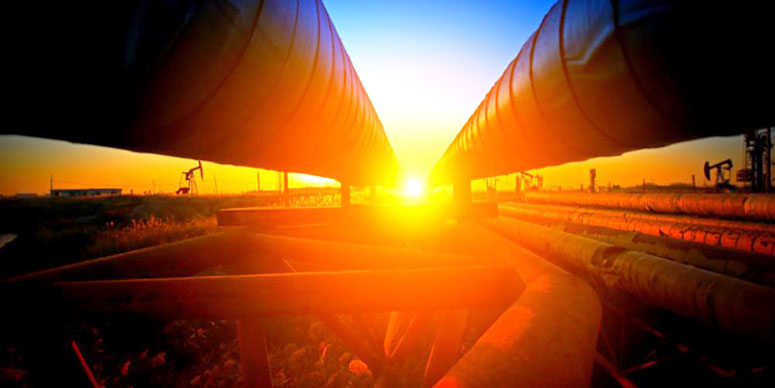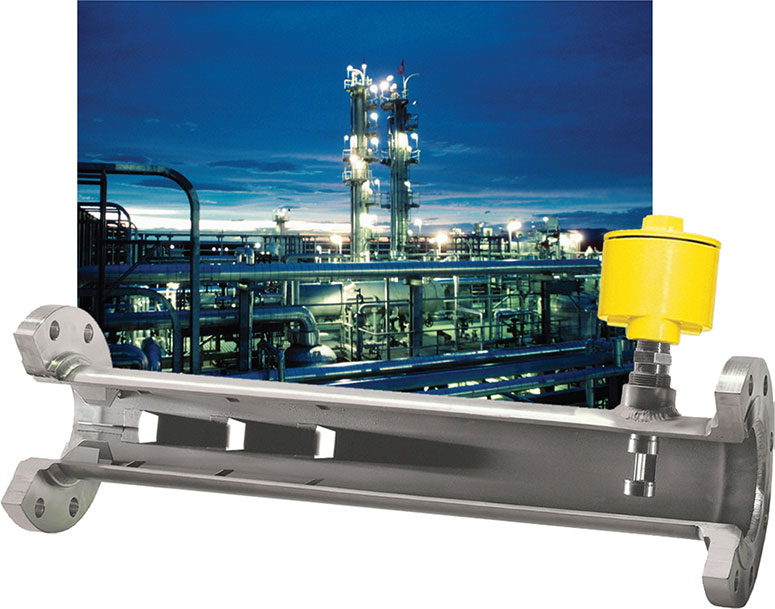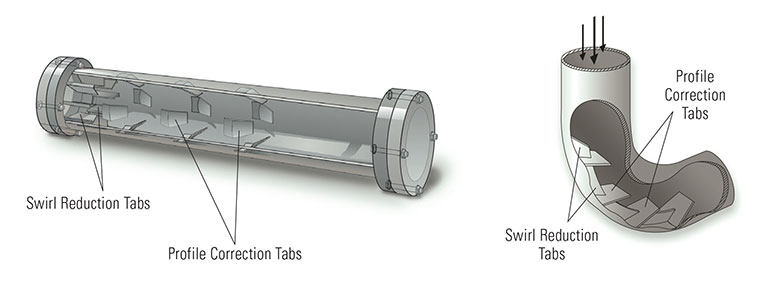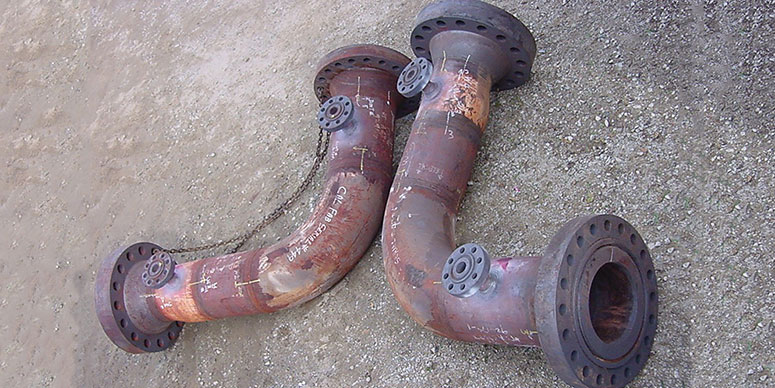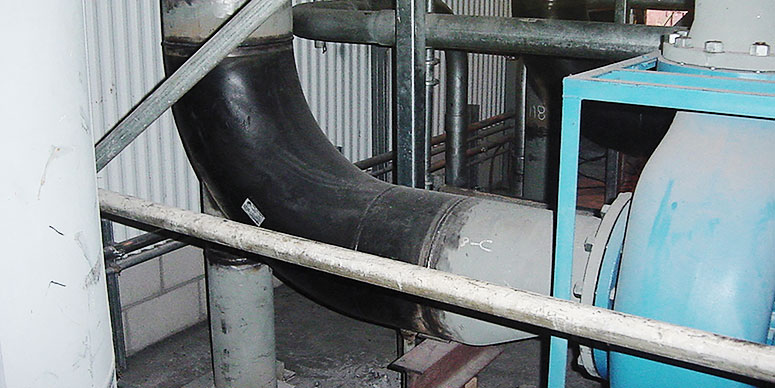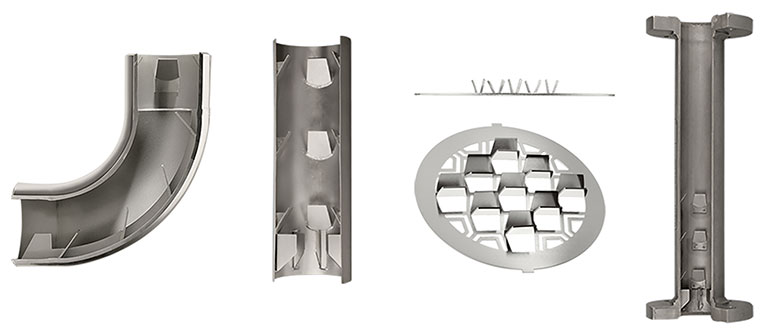Tech Spotlight: Optimizing Flow Measurement Accuracy to Reduce Costs
Smart flow conditioning projects pay for themselves, says Don Lundberg, senior engineer at Fluid Components International.
Plant projects that optimize flow measurement accuracy can result in significant cost savings while offering quality improvements and even a competitive advantage. The accurate measurement of gases, steam, liquids and slurries is critically important in oil and gas production, pipelines, refineries and many other types of petrochemical plants.
Unfortunately, the measurement of flow is often an afterthought—especially in many plant expansion, equipment upgrades and retrofit projects. The selection and placement of flow switches and flowmeters requires careful advance thought. Choosing the wrong flow sensing technology for an application or placing the flow instrument in the wrong location too closely to pumps or valves can eliminate potential cost savings and it frequently results in unnecessary replacement or relocation projects.
Careful planning for new or upgrade flow instrumentation in a company’s process, however, offers many advantages:
• Reduced initial instrument installation costs and faster startup;
• Lower energy costs to run burners, boilers, fans or ovens;
• More efficient consumption of process gases, such as chlorine or nitrogen;
• Lowering the consumption of process water and wastewater; and
• Less frequent plant maintenance and equipment replacement.
The problems
Every plant in a perfect world would have an instrumentation engineer on staff who is familiar with all the different flow technologies on the market, has experience applying them in multiple processes or industries, enough budget to buy the best equipment and a great maintenance team to do the installation.
The best and most effective ways to optimize the plant’s flow instrumentation can be summed up with four broad guidelines:
1. Be sure to select the appropriate flow sensing technology for the process media;
2. Think ahead, in advance about the installation and maintenance requirements;
3. Don’t forget to consider the impact of other equipment near flow instrumentation; and
4. Anticipate the need for a flow conditioner or flow straightener to ensure accuracy.
Technologies for flow measurement
The first consideration when choosing a flow sensing technology should always be the process media to be measured: air, gas, steam, liquid or slurries. There is no “one size fits all,” meaning all flow sensing technologies perform best in one or two media, such as gas or liquids. For example, some sensor technologies will measure slurries—and some won’t at all.
The industry’s major flow sensing technologies available include coriolis (mass), differential pressure, electromagnetic, positive displacement, thermal (mass), turbine, ultrasonic, variable area and vortex shedding.
Potential installation problems
One of the most common issues when installing flow instruments, especially flowmeters, is an inadequate straight run upstream and downstream from the instrument. In advance of making any hard decisions about a particular flowmeter, consult the manufacturer’s specification to determine the necessary straight pipe run. Failure to do so often results in a “do not pass go” situation and not achieving a “first-time right” solution.
Nearby piping elbows, expansions or reductions, and/or or spiral piping in close proximity to flow and other instrumentation often further exacerbates the problem of inadequate straight runs. High-density equipment layouts without enough space and poor piping layouts all work together to alter the process media’s tangential, radial and axial velocity vectors. The final result is flow disturbances, including swirl, jetting and velocity profile distortions.
When flow disturbances are created in pipelines, there is a high probability of a significant impact on the performance of flowmeters, pumps and other equipment. For example, with flowmeters, the irregular flow of process material adversely affects the accuracy and repeatability of many of the most popular flow sensing technologies: differential pressure, turbine, magnetic, thermal, ultrasonic and vortex shedding. Depending on the flow sensing technology, the straight pipe run requirements for flowmeters varies from 10 to 20 or more diameters.
The answers
To reduce the impact of swirl and other flow disturbances in the pipe on flow measurement accuracy, one of the simplest and most effective solutions is the use of flow conditioners. With the addition of a flow conditioner in the process stream, it is often possible to increase the accuracy and/or repeatability of a flow instrument by 50% or more.
Thermal mass flowmeters with the addition of a flow conditioner, for example, can be optimized to perform at ±1% accuracy instead of their standard ±2% accuracy. That type of accuracy improvement can lead to large savings in controlling expensive natural gas fed burners for plant boilers over a year’s period of time.
There are many different kinds of flow conditioner technologies:
• Perforated plates are often chosen for use in natural gas pipelines or other clean gases and liquid applications. They are simple to install and require no spool piece, but they can be prone to clogging in dirty gas.
• Tab-type conditioners perform well in clean or dirty gases and liquids because of the tapered design of their tabs. They provide excellent cross-mixing to remove swirl and correct velocity profiles with minimal pressure-drop.
• Honeycomb vane-type conditioners are frequently selected in HVAC or compressed air handling system applications where they provide air flow profile corrections. A wide variety of different designs and materials are available.
• Tube bundles and vanes have been used for decades. Tube bundles are effective at removing swirl but have the tendency to freeze the velocity profile; therefore, they are not as efficient at isolating and correcting flow distortion anomalies.
All of these technologies have their advantages and/or disadvantages, depending on the process and plant. Thinking about the process media, the plant’s equipment, environmental or other regulations, and maintenance schedules, a company will be able to narrow the field to one or two best choices.
Always remember, in general, that the more effective flow conditioners are at correcting flow profile distortions, the more pressure drop they can produce. When the goal is to lower power consumption or pumping costs or there is a need to speed product throughput, then the company will want to minimize head loss or pressure drop.
When considering the potential impact of pressure drop, for example, one of the flow conditioning technologies that has proven itself effective is the tab-type flow conditioner (Figure 1). In its standard straight tube configuration, the Vortab Flow Conditioner consists of pipe fitted with a short section of swirl reduction tabs combined with three arrays of profile conditioning tabs.
FIGURE 1. Tab-type flow conditioner with mass flowmeter
The combined effect of the tab-type conditioner’s anti-swirl and profile conditioning tabs creates a repeatable, flat velocity profile at the outlet of the pipe. An elbow flow conditioner also can be configured with the same tab-type flow conditioning technology (Figure 2), where an elbow must be installed to route the piping to support the required equipment layout of the process.
FIGURE 2. Pipe straight-run and elbow tab-type conditioners
Many hydrocarbon production, refining and pipeline distribution processes require different types of flow instruments that can benefit from the installation of tab-type flow conditioners.
At an offshore oil pumping station, for example, the process engineering team needed to add a pump to increase liquid capacity. Elbows feeding into the pump consisted of a 20-inch inlet and reduced down to a 12-inch section (Figure 3).
FIGURE 3. Elbows for offshore oil pumping station
The engineer quickly determined there was no room for the pump’s required straight run and no way to expand the platform to accommodate the pipe run. By inserting a tab-type elbow conditioner in the elbow itself, the engineer solved the space problem by ensuring a properly conditioned flow entering the pump at a large cost savings and freed real estate for other possible uses.
Similar situations exist in refineries or pipeline pumping stations where pumps and elbows must operate in crowded conditions while the simultaneous need for accurate gas or liquid flow measurement must be accommodated.
At another plant, the engineering team needed to add two identical 14-inch centrifugal pumps to feed water into its main boilers. The pump configuration required that the line size drops from 16 inches at the elbow to 14 inches at the pump inlet. These pumps are powered by 350-hp electric motors.
FIGURE 4. Elbow with insertion panel tab conditioner to pump connection FIGURE 5. Tab-type conditioners in straight-run, insertion panel and meter-run designs
Upon installing the pumps, it was found that the indoor facility did not have adequate room for an upstream pipe run into the pumps. Note the close proximity of the building’s wall in Figure 4. Installing a tab-type flow conditioner in the elbow compensated for the lack of the necessary pipe straight-run and provided an equally distributed flow profile entering the pumps.
Beyond accommodating elbows and pumps, tab-type flow conditioners are also available in other configurations, including straight-pipe runs, insertion panels and meter run configurations (Figure 5). No matter the equipment or instrumentation when space is a problem in maintaining adequate lengths of straight pipe, flow conditioners are a useful solution.
Conclusion
The first-time right selection of the proper flow instrument and its effective installation can be achieved by thorough advanced planning, including the consideration of the process media and installation location. Where appropriate, the addition of flow conditioners can optimize the performance of flow instruments and other equipment such as pumps and valves.

 石油圈
石油圈